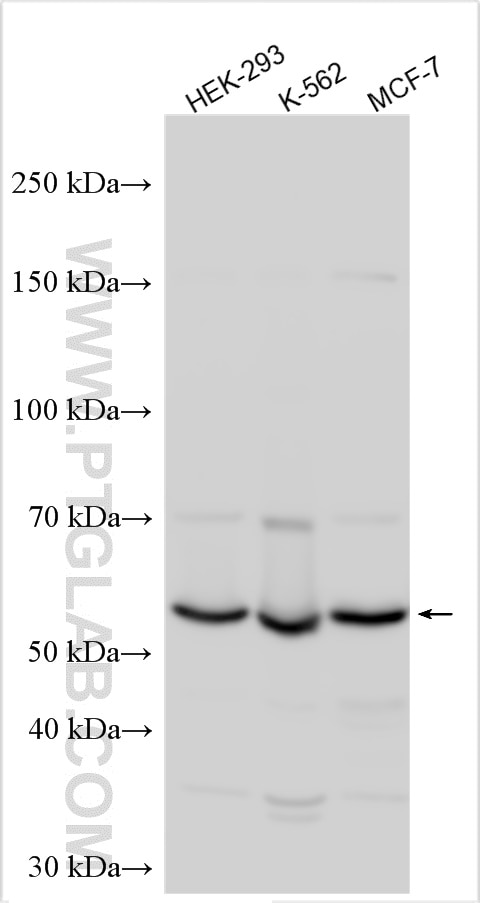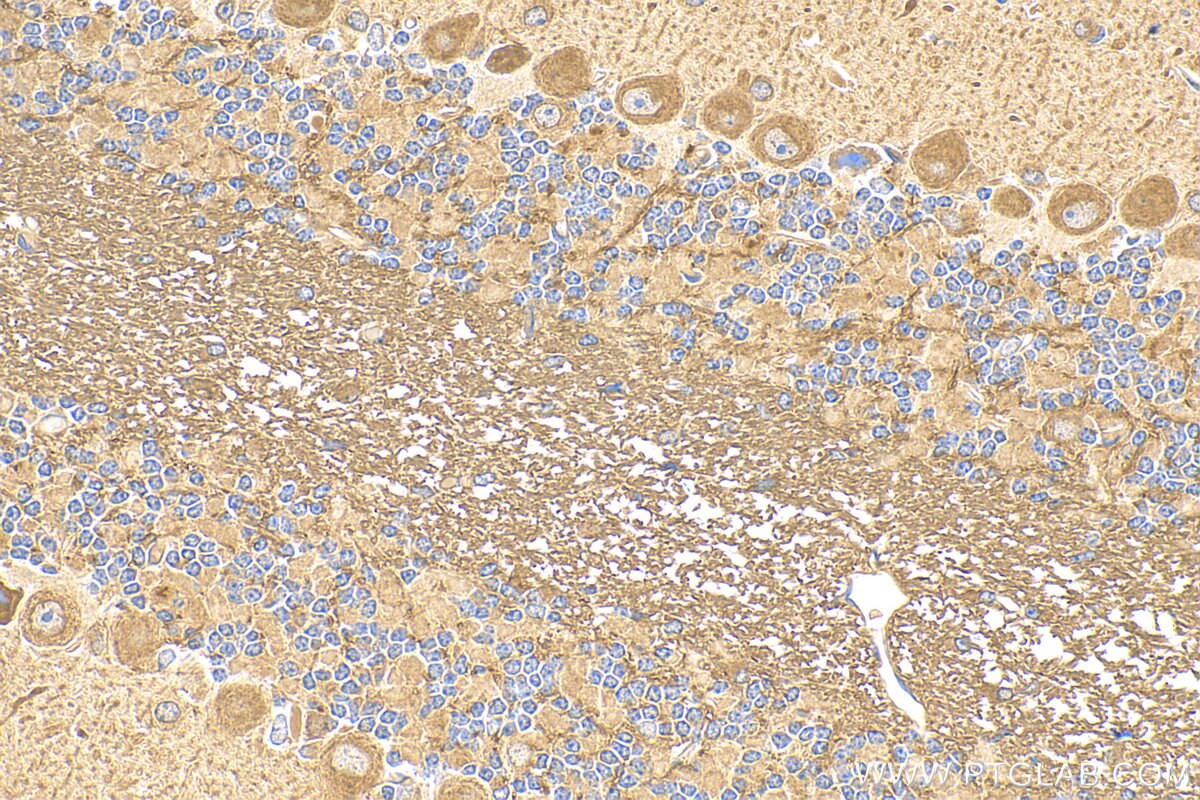Validation Data Gallery
Tested Applications
| Positive WB detected in | MCF-7 cells, HEK-293 cells, K-562 cells |
| Positive IHC detected in | mouse cerebellum tissue Note: suggested antigen retrieval with TE buffer pH 9.0; (*) Alternatively, antigen retrieval may be performed with citrate buffer pH 6.0 |
Recommended dilution
| Application | Dilution |
|---|---|
| Western Blot (WB) | WB : 1:2000-1:12000 |
| Immunohistochemistry (IHC) | IHC : 1:50-1:500 |
| It is recommended that this reagent should be titrated in each testing system to obtain optimal results. | |
| Sample-dependent, Check data in validation data gallery. | |
Product Information
30857-1-AP targets KIAA1715 in WB, IHC, ELISA applications and shows reactivity with Human, mouse samples.
| Tested Reactivity | Human, mouse |
| Host / Isotype | Rabbit / IgG |
| Class | Polyclonal |
| Type | Antibody |
| Immunogen |
CatNo: Ag33996 Product name: Recombinant human KIAA1715 protein Source: e coli.-derived, PET28a Tag: 6*His Domain: 101-428 aa of BC105132 Sequence: RTERNNEALDDLKSQRKKILEEVMEKETYKTAKLILERFDPDSKKAKECEPPSAGAAVTARPGQEIRQRTAAQRNLSPTPASPNQGPPPQVPVSPGPPKDSSAPGGPPERTVTPALSSNVLPRHLGSPATSVPGMGLHPPGPPLARPILPRERGALDRIVEYLVGDGPQNRYALICQQCFSHNGMALKEEFEYIAFRCAYCFFLNPARKTRPQAPRLPEFSFEKRQVVEGSSSVGPLPSGSVLSSDNQFNEESLEHDVLDDNTEQTDDKIPATEQTNQVIEKASDSEEPEEKQETENEEASVIETNSTVPGADSIPDPELSGESLTAE 相同性解析による交差性が予測される生物種 |
| Full Name | KIAA1715 |
| Observed molecular weight | 53 kDa |
| GenBank accession number | BC105132 |
| Gene Symbol | KIAA1715 |
| Gene ID (NCBI) | 80856 |
| RRID | AB_3086424 |
| Conjugate | Unconjugated |
| Form | |
| Form | Liquid |
| Purification Method | Antigen affinity Purification |
| UNIPROT ID | Q9C0E8 |
| Storage Buffer | PBS with 0.02% sodium azide and 50% glycerol{{ptg:BufferTemp}}7.3 |
| Storage Conditions | Store at -20°C. Stable for one year after shipment. Aliquoting is unnecessary for -20oC storage. |
Background Information
KIAA1715, also known as LNPK, is a member of the conserved Lunapark protein family. KIAA1715 is an endoplasmic reticulum (ER) membrane protein consisting of an N-terminal domain important for N-myristoylation and ER targeting, two transmembrane domains and a unique zinc finger domain. It has 4 isoforms produced by alternative splicing and acts mainly as a stabilizer of negative membrane curvature (PMID: 27619977).
Protocols
| Product Specific Protocols | |
|---|---|
| IHC protocol for KIAA1715 antibody 30857-1-AP | Download protocol |
| WB protocol for KIAA1715 antibody 30857-1-AP | Download protocol |
| Standard Protocols | |
|---|---|
| Click here to view our Standard Protocols |


